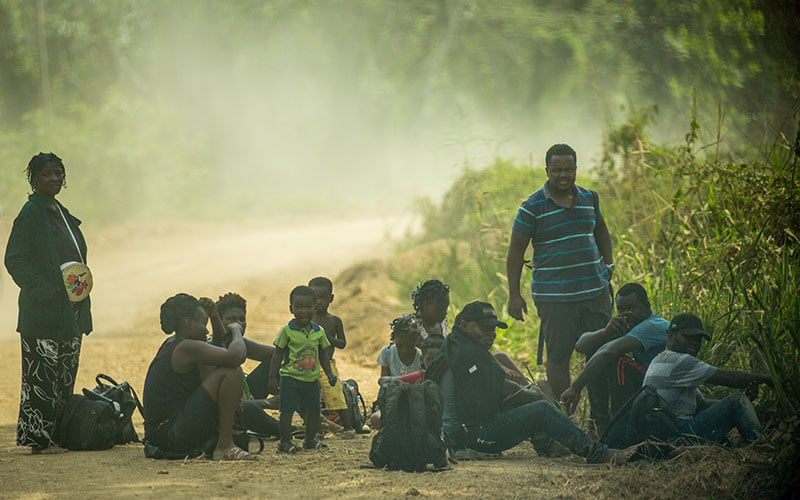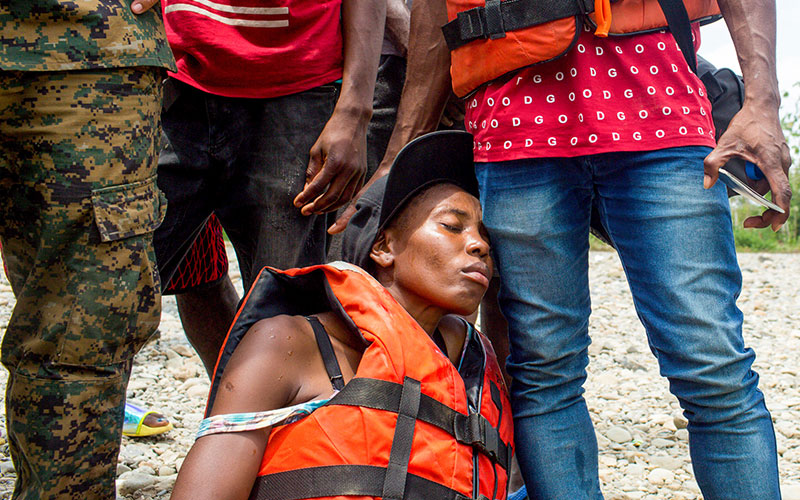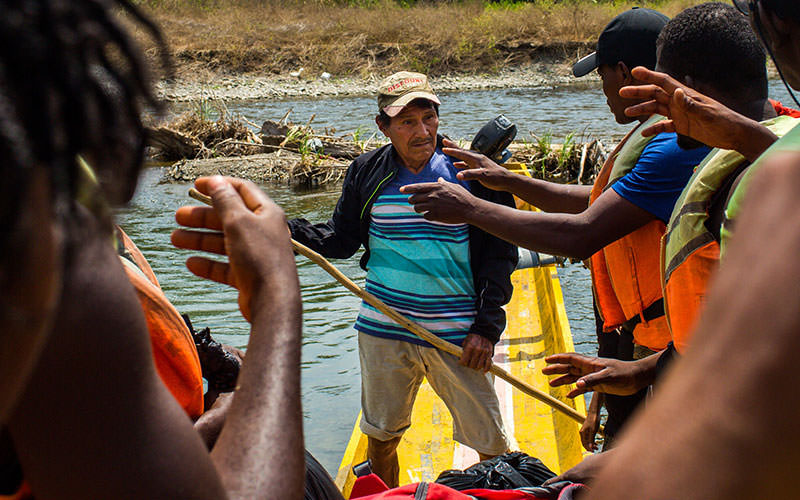Torn between humanitarian ideals and U.S. pressure, Panama screens migrants from around the world
LA PEÑITA, Panama — Tens of thousands of migrants from around the world are making a dangerous journey through Panama – fleeing violence, poverty and prejudice, most trying to reach the U.S. and Canada. For many migrants, Panama is their first encounter with the U.S. immigration system.
Fleeing chaos, Venezuelans flock to Panama but struggle to find work
PANAMA CITY, Panama – 150,000 Venezuelans have fled to Panama, where they are reshaping the country’s labor force and cultural life.
To reach freedom, migrants risk Panama’s Darién Gap, the most dangerous jungle in the world
Desperate migrants from across the globe are increasingly braving Panama’s Darién Gap – considered the most dangerous jungle in the world.
On their way north, pregnant migrants brave a harrowing jungle crossing in Panama
BAJO CHIQUITO, Panama – Panama has been overwhelmed by the increasing numbers of migrants coming through the Darién jungle that separates it from Colombia – an increasing number of them are pregnant women.
Asians make long transcontinental journey to reach U.S., new opportunities
LA PEÑITA, PANAMA – An increasing number of migrants from far-flung places in Asia are attempting to get to the United States via a long journey through South and Central America.
Cubans looking for freedom increasingly land in Panama
PANAMA CITY, Panama – Increasingly, Cuban migrants travel through Panama hoping to reach the United States. While some reach the U.S.-Mexico border, others give up and stay in countries that were not their original destinations.
One Cuban migrant family’s long, perilous journey to freedom
PHOENIX – Cubans seeking political asylum are increasingly taking a long, dangerous, intercontinental journey.
Nicaraguans seek refuge in Panama, cementing the country’s status as migrant destination
PANAMA CITY, Panama – Nicaraguans fleeing political and economic conditions in their country are moving south to Panama, against the normal tide of immigration in the hemisphere.
American expats find opportunity in Panama, despite the pandemic
PANAMA CITY – Panama no longer is just for retirees. Young professionals and couples from the U.S., Canada and other countries are increasingly making the move to the small Central American country of 4.3 million residents.
Migrants face life-threatening illnesses because of dirty water in Panamanian camps
BAJO CHIQUITO, Panama – For the hundreds of migrants in a Panamanian migrant camp, a nearby river provides their drinking water and bathwater – and serves as their toilet – leading to illness.
Migrants hope to work legally in Panama, but some jobs are off-limits
PANAMA CITY, Panama – The nation of Panama reserves 56 professions for citizens only, leaving otherwise qualified migrants struggling to find legal employment.
Haitians make long continental transit in hope for a better future
LA PEÑITA, Panama – Despite the dangers of the jungle, increasing numbers of Haitian nationals are risking the journey to leave their Caribbean island homeland, which is the poorest in the Western Hemisphere, according to the World Bank.
Personal essay: Capturing and documenting trauma in Panama
A photojournalism student writes about her experiences with the people who journeyed through the dangerous Darién Gap in Panama.
Panama confronts human traffickers where a major migration route bottlenecks
Migrants are increasingly paying organized criminal groups to take them through Central America and Mexico and into the U.S. illegally.













